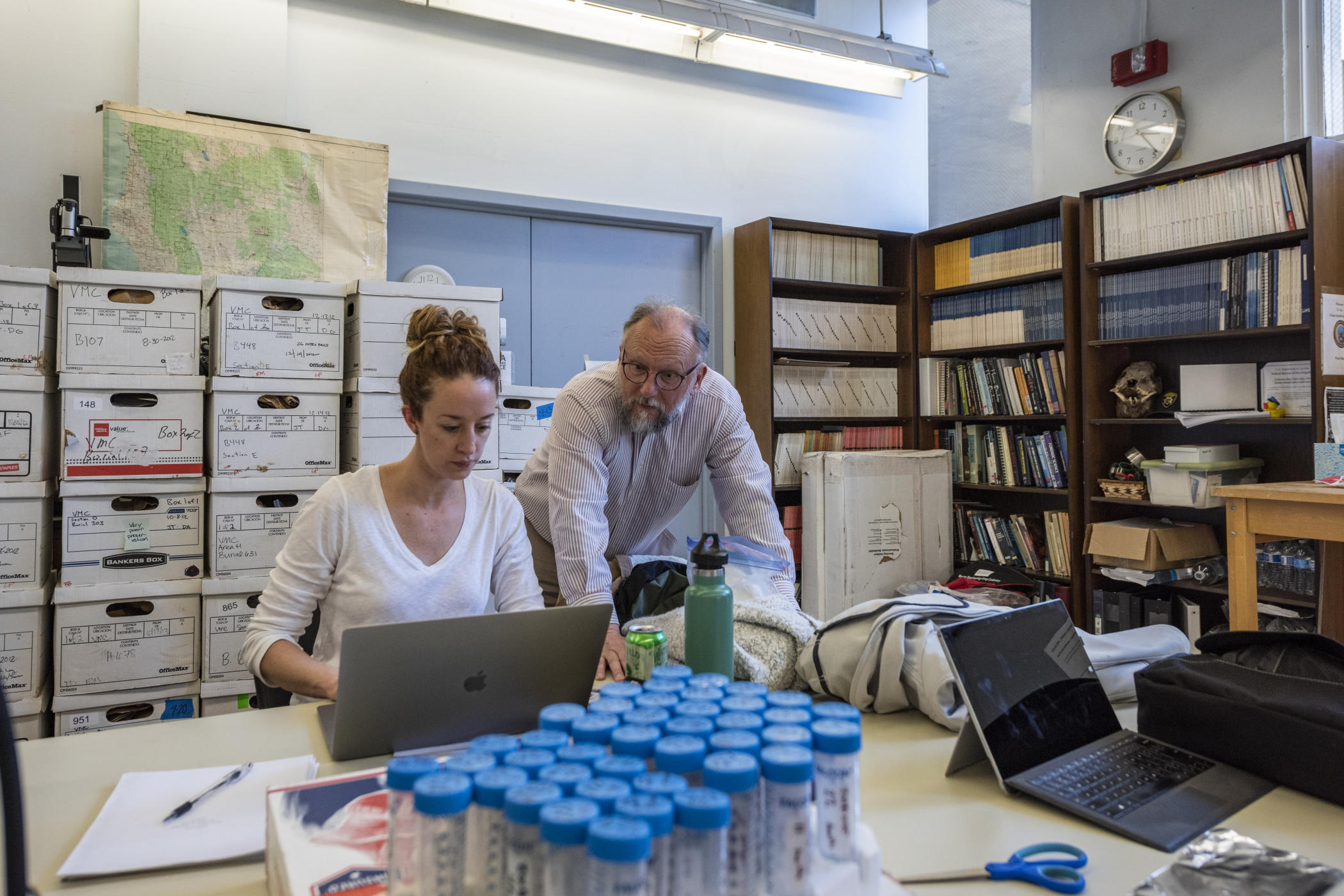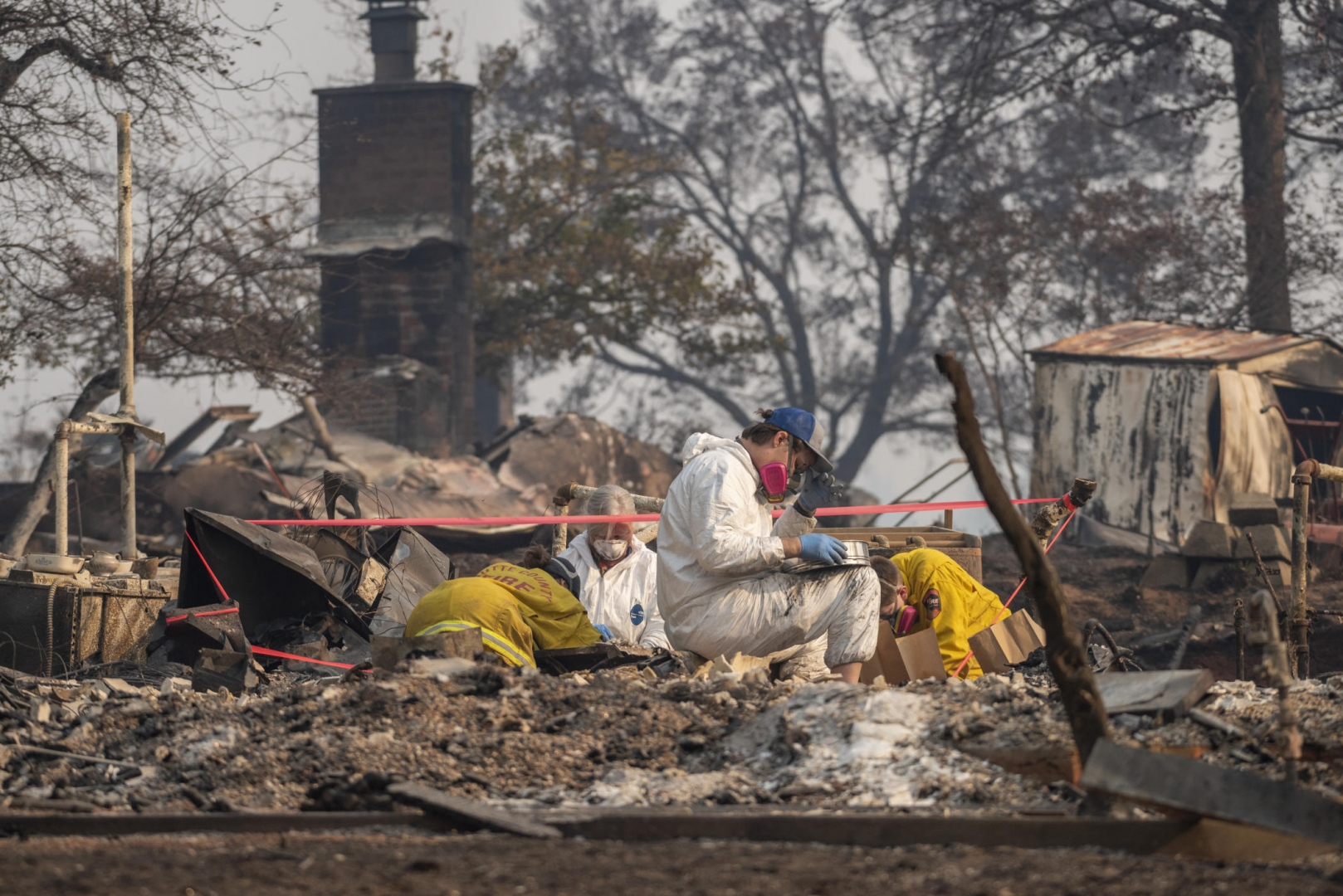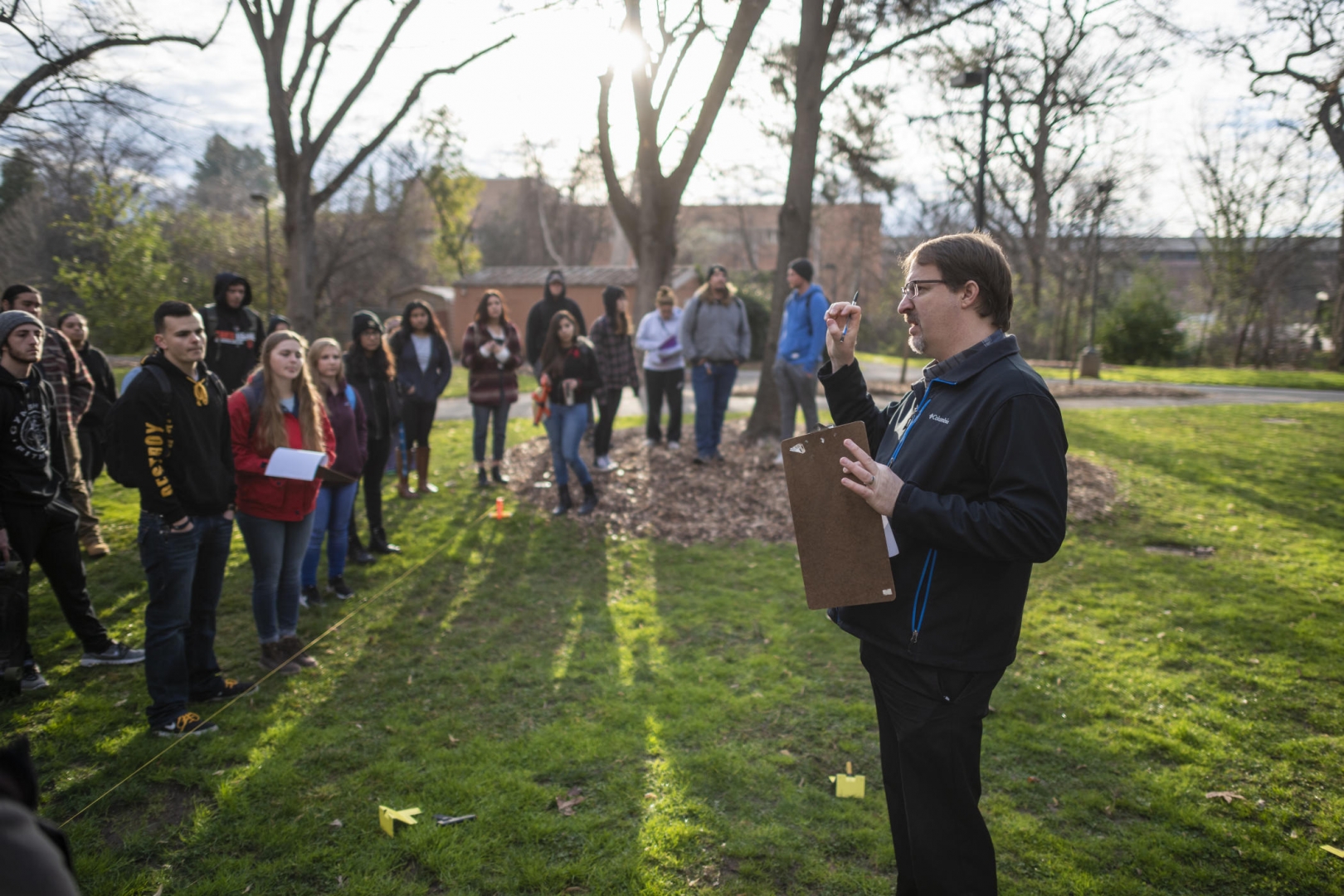New Facility for University’s Human Identification Laboratory Included in California State Budget May Revise

Faculty Ashley Kendell (left) and P. Willey (right) work in the Anthropology Department Human Identification Laboratory. Now a half-century old, the facility is in desperate need of upgrades that cannot be achieved through renovation.
Facility Will Provide Critical Upgrades for the Only Full-Time Forensic Anthropology Lab in the State to Support its Investigations, Disaster Response and Law Enforcement Training
Leadership at Chico State was thrilled to see funding for a new Human Identification Laboratory (HIL) has been included in the state’s May budget revise, released by Governor Gavin Newsom today.
As the only facility in the state that operates as a full-time forensic anthropology laboratory, the HIL led the forensic investigations during the Camp Fire and has conducted over 700 investigations in 47 California counties in the last four years to serve dozens of local, state and federal law enforcement partners including the California Office of Emergency Services, the US Department of Homeland Security and the Federal Bureau of Investigation.
The 50-year-old laboratory is critically in need of a new facility in order to meet expanding demand for its services to recover missing persons, analyze and identify their bodies, present vital information to resolve criminal cases and provide closure to families.
“We are humbled and deeply appreciative to Gov. Newsom and our state legislators for recognizing the importance of the Human ID Lab for the State of California,” said Chico State President Gayle Hutchinson. “This new facility—designed for 21st century needs—will empower us to rapidly mobilize to provide search and recovery in large-scale disasters, speed identification of remains and train the next generation of forensic anthropologists who will search, recover and identify the missing to provide closure to families, bring criminals to justice and make all our communities safer.”
From the new HIL facility, Chico State’s forensic anthropologists will be able to rapidly mobilize, providing search and recovery in large-scale emergencies like wildfires, bus accidents, pipeline explosions and natural disasters. The new facility also will offer incredible value for the region’s citizens and for police and coroner’s departments, district attorneys, the California Department of Justice and federal agencies.
The HIL is one of the very few programs in North America—and the only University lab in the Western United States—to provide its kind and caliber of work. The US Emergency Management Assistance Compact lists the HIL as a “deployable” state resource, and Chico State is the only university on its list.
“Chico State’s Human Identification Lab is an invaluable resource for law enforcement agencies across the state and nation,” said Tulare County Sheriff Mike Boudreaux, president of the California State Sheriffs’ Association. “They respond to cases day or night and spend countless hours in the field every year to provide their expertise in investigations, as well as to support essential trainings. We appreciate the Legislature’s support so the HIL can continue to support our agencies with ever-growing needs.”

The site for its new facility is at First and Cedar Streets in Chico, adjacent to the University’s primary campus, and will serve as headquarters for the HIL’s services. It will triple refrigeration units, significantly increase both wet and dry lab space, and add more work stations for lab techs. It also will provide offices, secure lockers and professional changing facilities, better security systems, up-to-date natural lighting and improved ventilation.
The new HIL will also offer classroom space for Peace Officer Standards and Training (POST) short courses, the Certificate in Forensic Science, the graduate program and other workshops and trainings. The HIL also has provided training to over 2,500 officers in both homicide courses and wildfire search and recovery training for search and rescue teams and coroners. Wildfire trainings are conducted with the curriculum and protocols they developed, and which were adopted by POST for use in its certified training program. Officially supported by the CA Office of Emergency Services (OES), the HIL training program and protocol are included as continuing education for county personnel, law enforcement, coroners, medical examiners and emergency personnel involved in search and rescue efforts throughout the state.
“Our teams work tirelessly and passionately to provide the necessary services for this critical work. We look forward to working together with the Legislature to make sure our new facility is in the final budget because of its recognized importance to the state of California,” said Colleen Milligan, co-director of the Human Identification Laboratory. “We are grateful for the support of our elected officials, law enforcement partners and the public in emphasizing the importance of this facility and the value in the services we provide.”
The HIL’s faculty members represent half of the board-certified forensic anthropologists in the state of California. They manage more than 120 cases annually, with the caseload growing sharply in recent years. Their unique expertise provides:
- Search and recovery fieldwork of outdoor scenes, including sites of major disasters such as wildfires.
- Laboratory analysis of skeletal remains. Staff identify age, sex, ancestry and stature of unidentified remains, and analyze trauma and cause of death.
- Outreach and training to law enforcement agencies, including the FBI.
- In 2017, staff who are also certified Peace Officer Standards and Training instructors offered 12 homicide courses. They also offer trainings on excavation methods, human remains recovery and bone identification.
- Consultation on national and international cases as well as an active role in discussions on laboratory accreditation and best practices.
When the lab was founded by Professor Emeritus Turhon Murad in the early 1970s, forensic anthropology was just beginning to be seen as its own science. Today, the HIL is operated by four full-time faculty and one staff member, and about 30 graduate and undergraduate students who are awarded access through a competitive internship process each semester.

Because of its advanced expertise, the lab handles some of the more difficult cases in the state, providing services at minimal or no charge. They assist on everything from unintended deaths to homicides, as well as archaeological and historical cases, including whether they are subject to the Native American Graves Protection and Repatriation Act and California Native American Graves Protection and Repatriation Act.
The HIL’s most famous cases include investigating the death of Polly Klaas, a 12-year-old girl who was kidnapped from her Northern California home in 1993. They also assisted on the San Bruno pipeline explosion in 2010 and the 2014 Interstate 5 bus crash in which 10 high school students were killed, along with their driver and a truck driver. Also, as California’s landscape and climate continue inevitably changing, the HIL is responding to an increasing number of wildfire-related deaths. Its team, with support from alumni and other state and federal partners, led the recovery and identification of more than 80 individuals in the deadly 2018 Camp Fire and continues to respond to wildfires on an annual basis.


